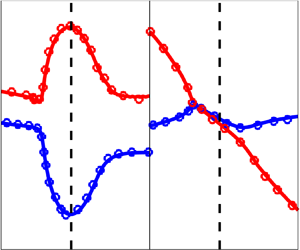No CrossRef data available.
Published online by Cambridge University Press: 27 November 2024

The dominant mode instability in hypersonic boundary-layer transition is the so-called second-mode instability, which has a peculiar nature strongly coupled with thermoacoustic phenomena. In linear stability theory, the unstable wave is associated with one of the two eigenvalues that originate from the acoustic branches, referred to as slow and fast modes. Interestingly, the unstable mode (slow or fast) reaches its maximum amplification as the other mode (fast or slow) attains a minimum. The phase velocity of the two modes is then very close, and this phenomenon is called synchronization. The aim of the present study is to unravel the physical mechanism that explains the second-mode growth. To that aim, second-order nonlinear equations are written for the disturbances given by linear stability. In this framework, entropy, kinetic energy and temperature energy budgets are obtained up to second order. The budgets are scrutinized for various Mach numbers and for adiabatic and cold-wall thermal conditions. Perturbation entropy budgets clearly show the process is a reversible one. An energy exchange between kinetic energy and temperature energy of the weakly nonlinear modes is driven by pressure–dilatation terms. As underlined in previous studies, the unstable mode experiences an alternate heating and cooling near the wall, which is shown to be a rather nonlinear process. The change in fluctuating thermal energy in the form of a dilatational wave is sustained by pumping disturbance kinetic energy through the pressure–dilatation term, the direction of the conversion being driven by the relative phase between pressure and dilatation. This process is similar for the slow and fast modes, the unstable mode being amplified and the other being damped. No change in the process has been noted at the location of the synchronization, suggesting that the modes have the same nature but evolve independently.